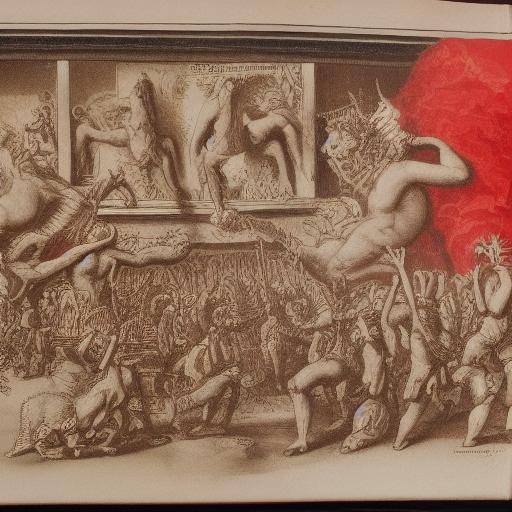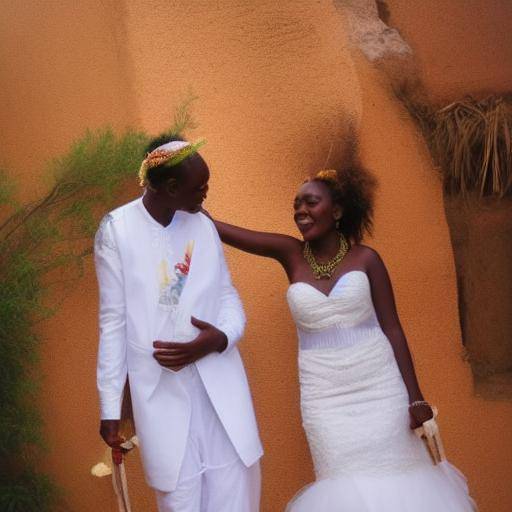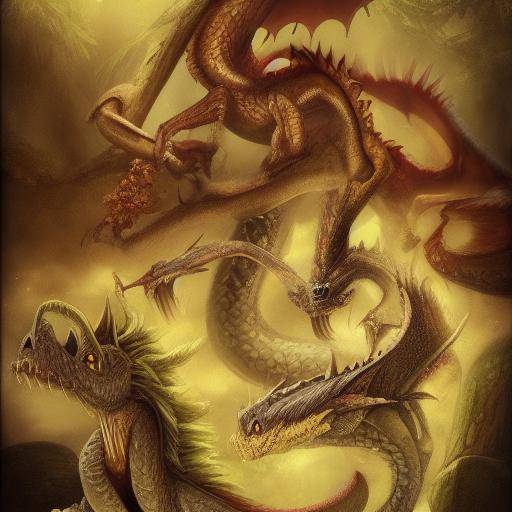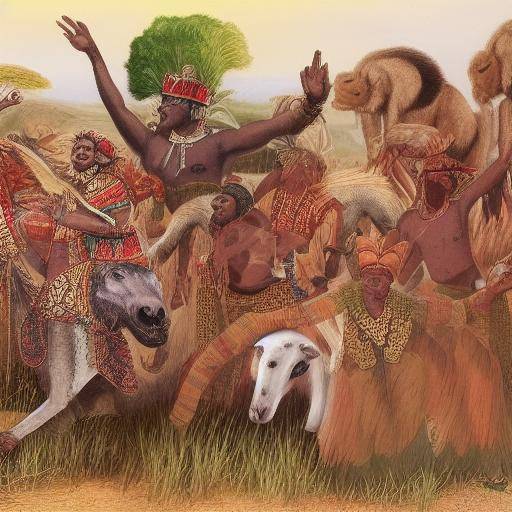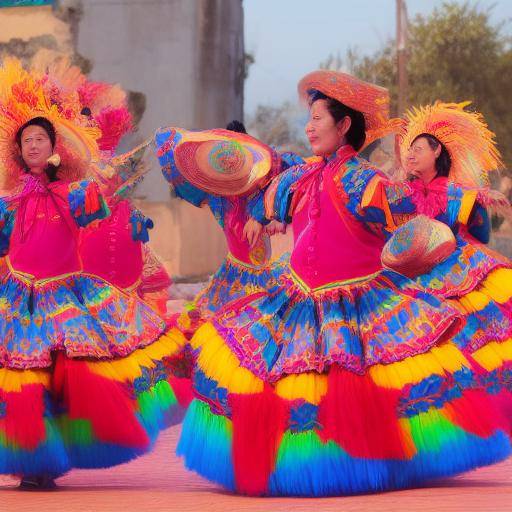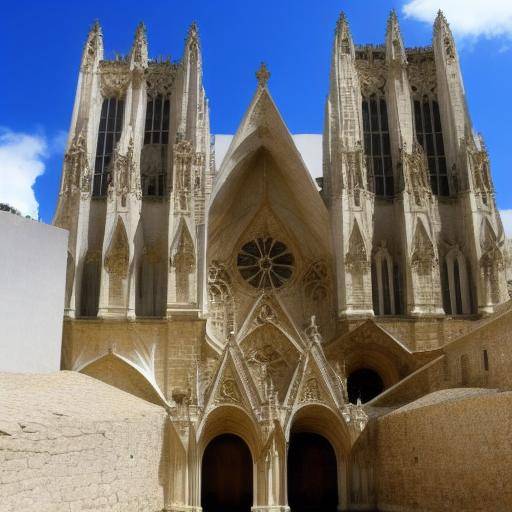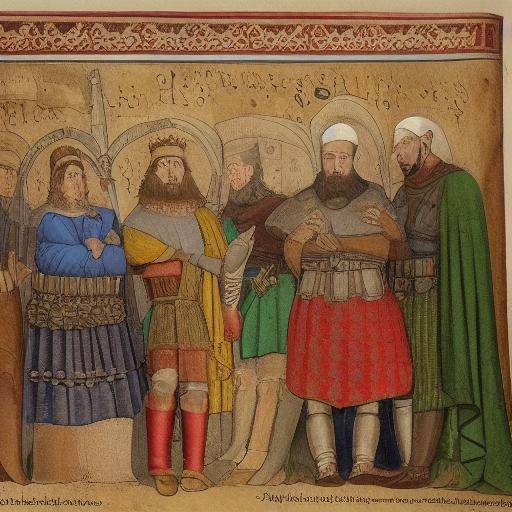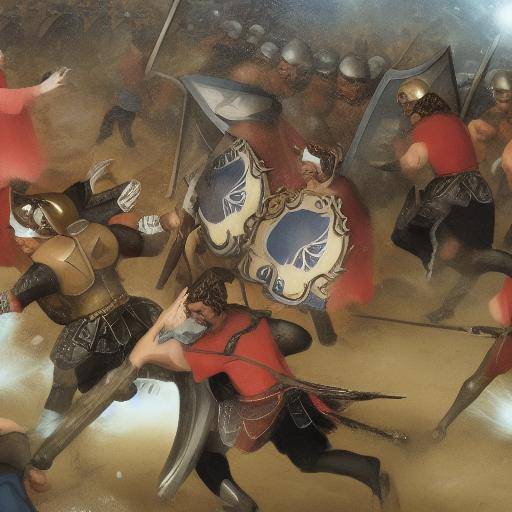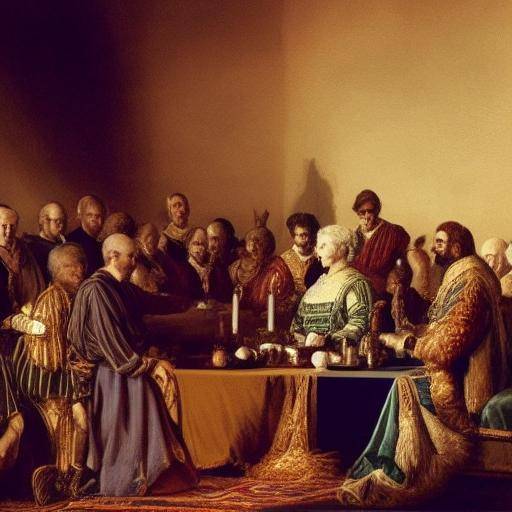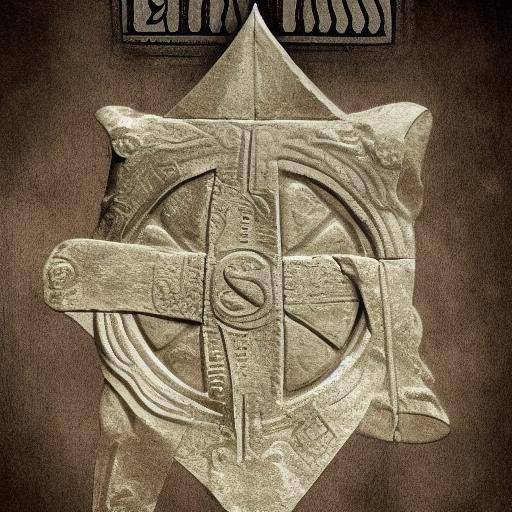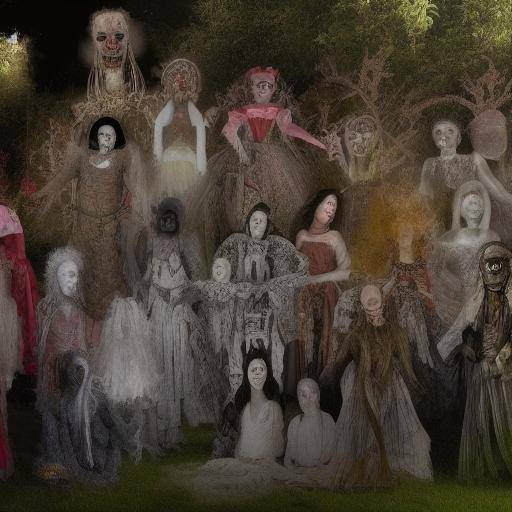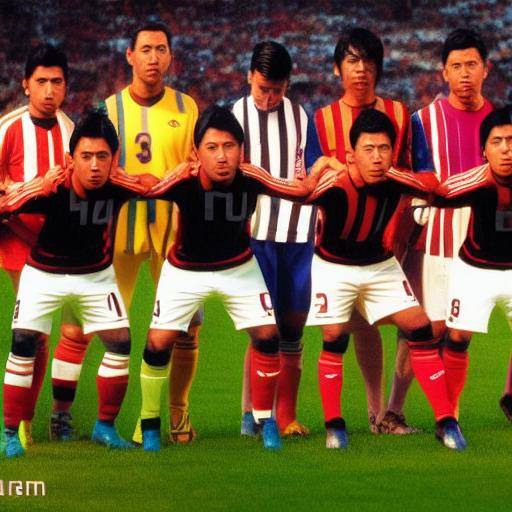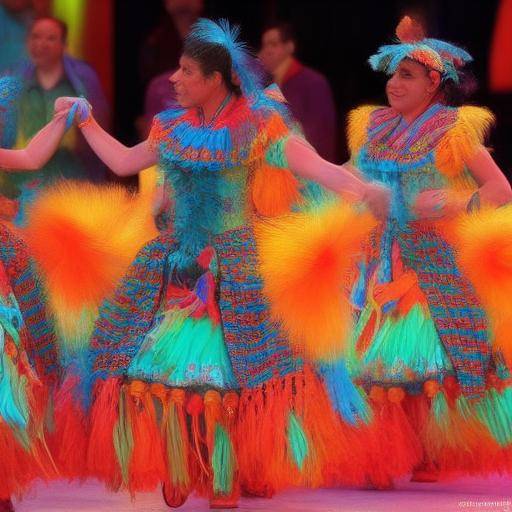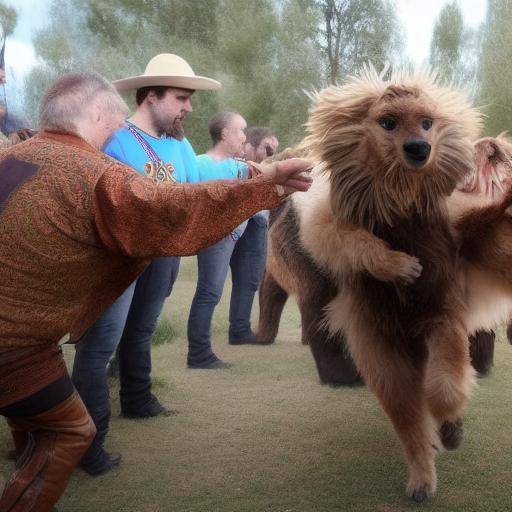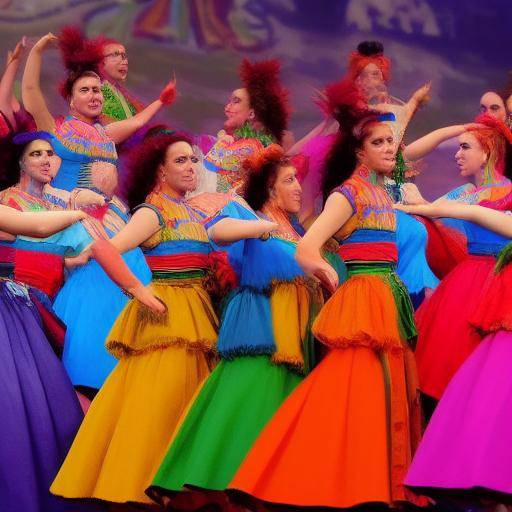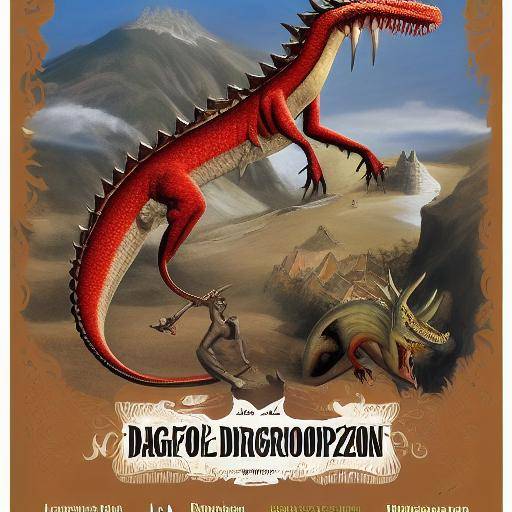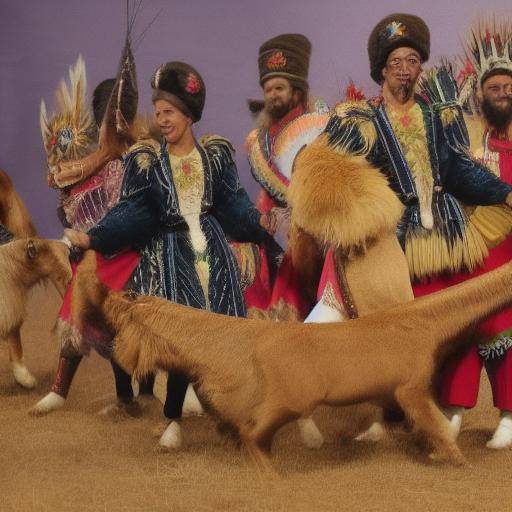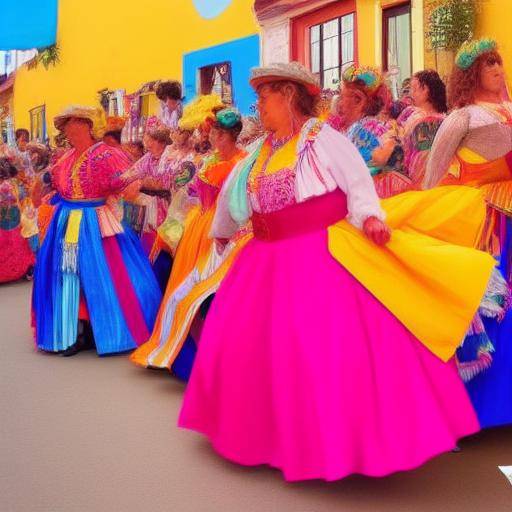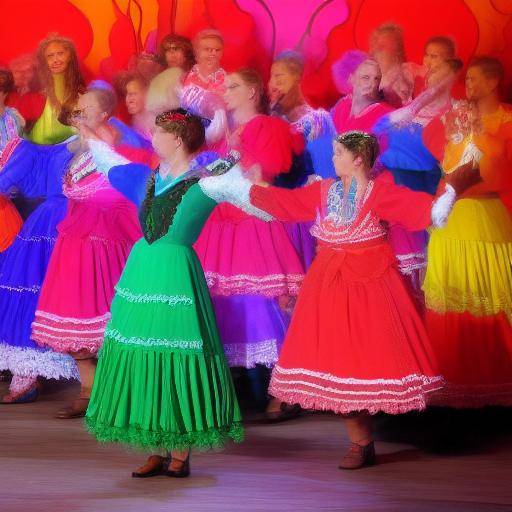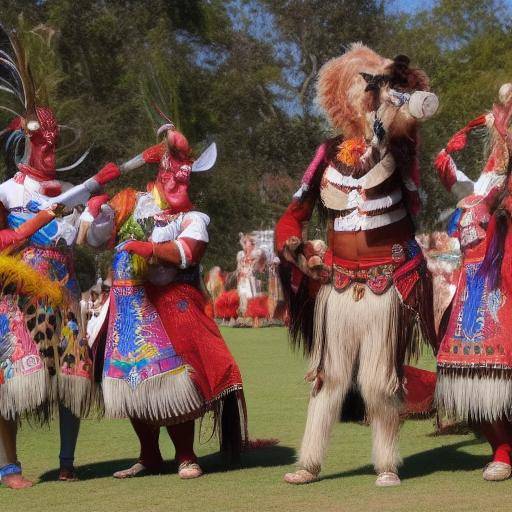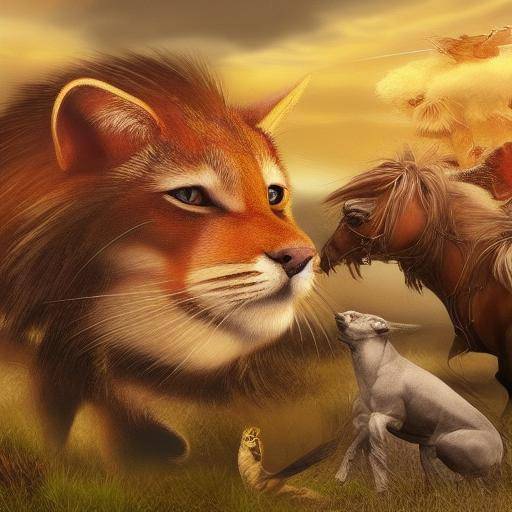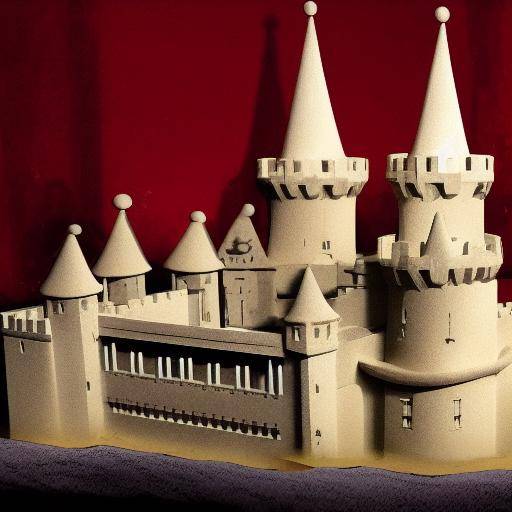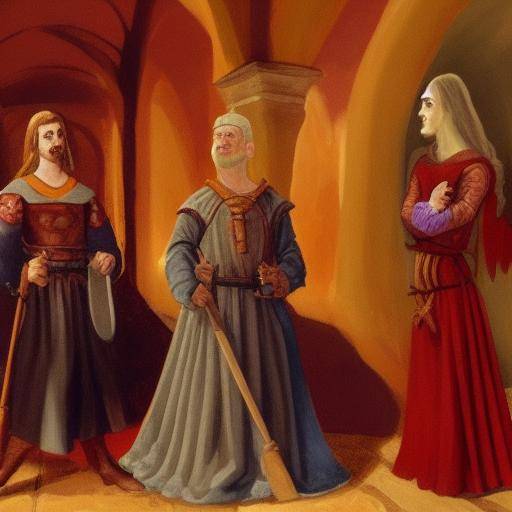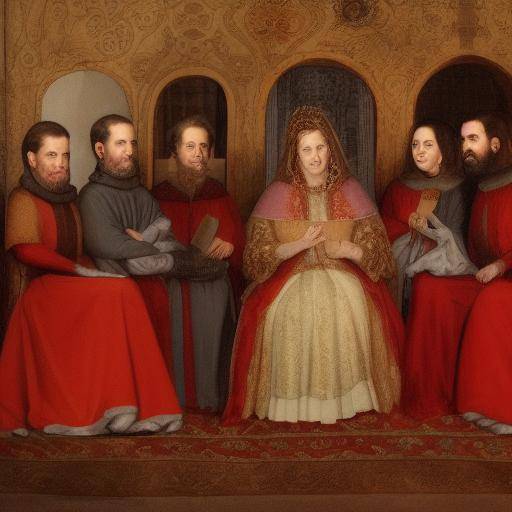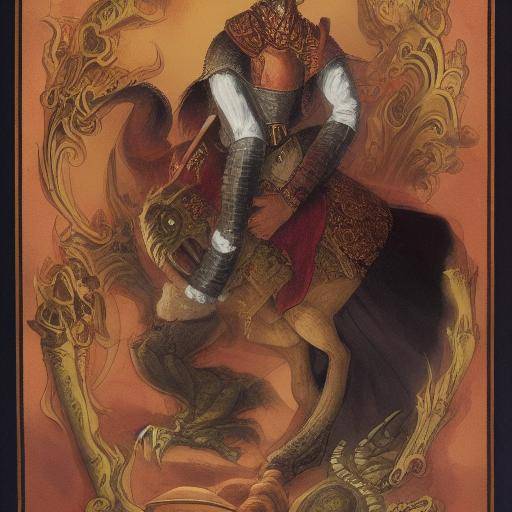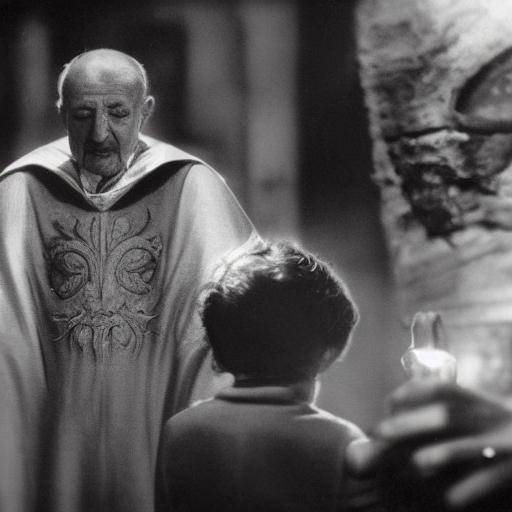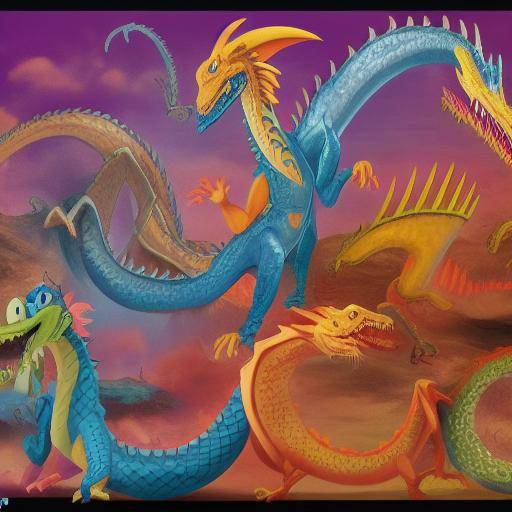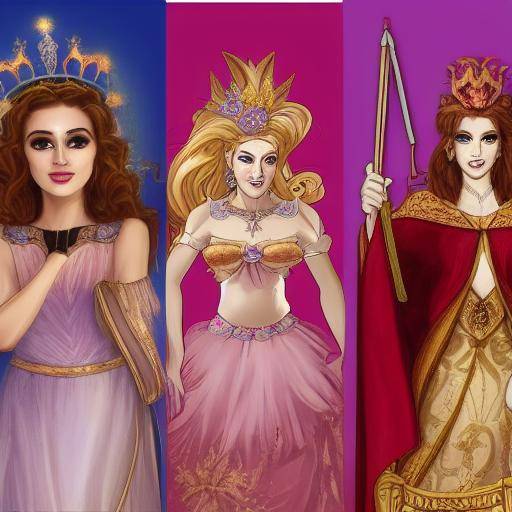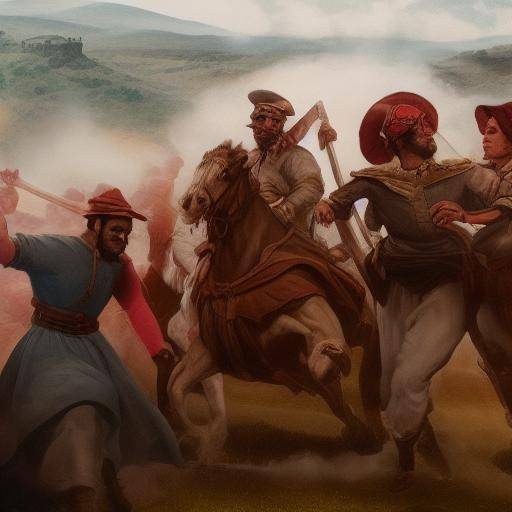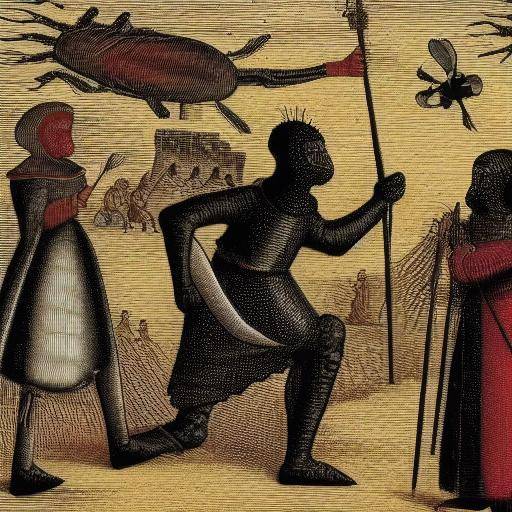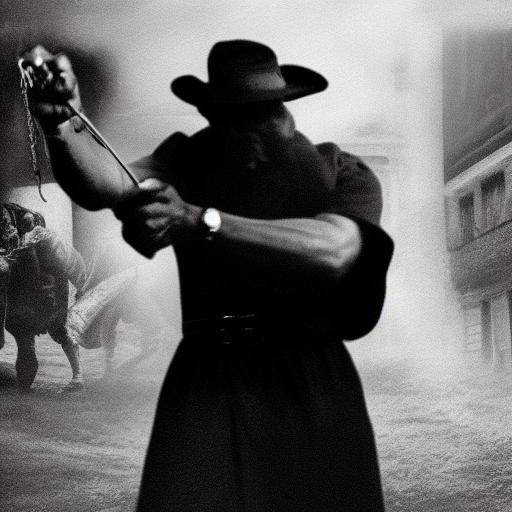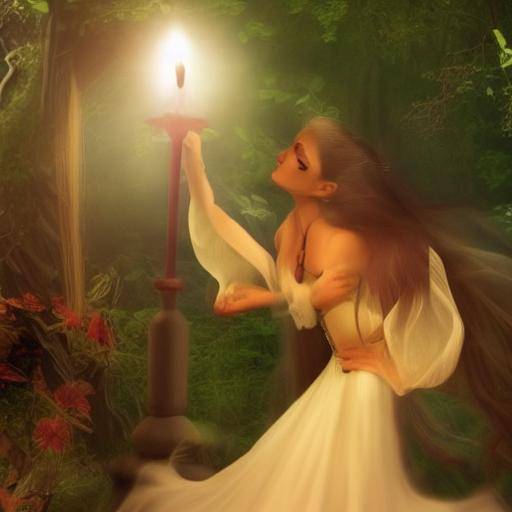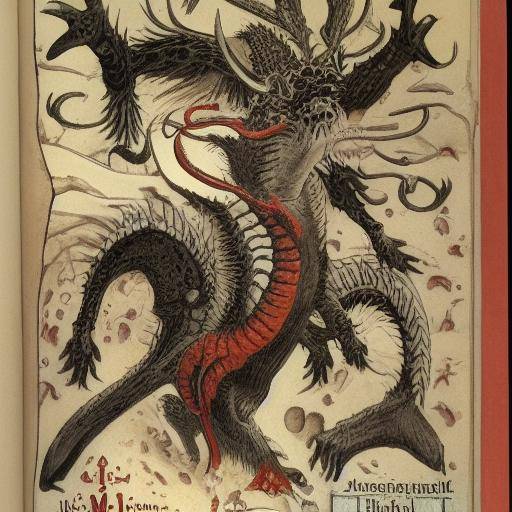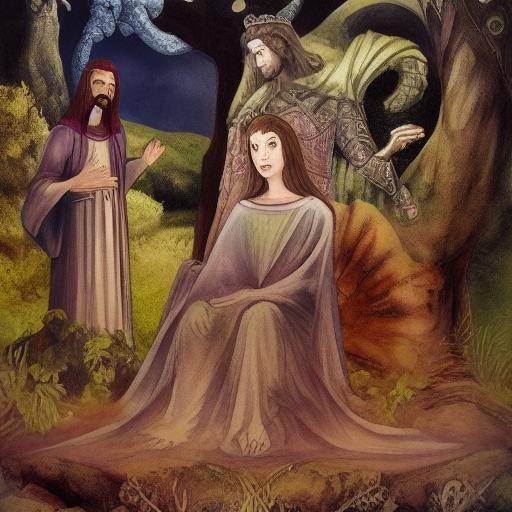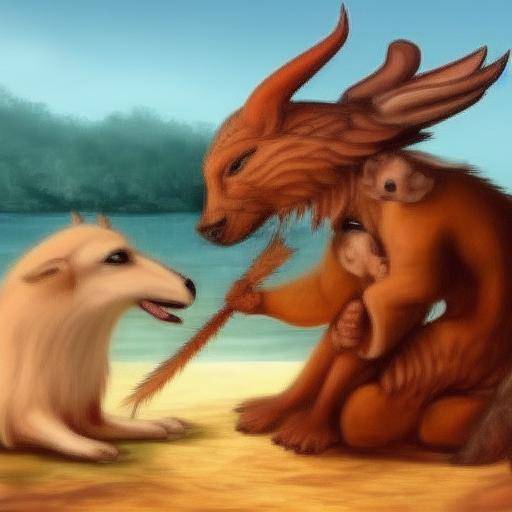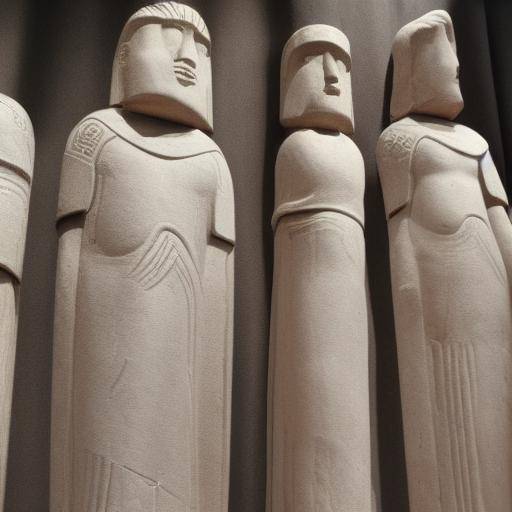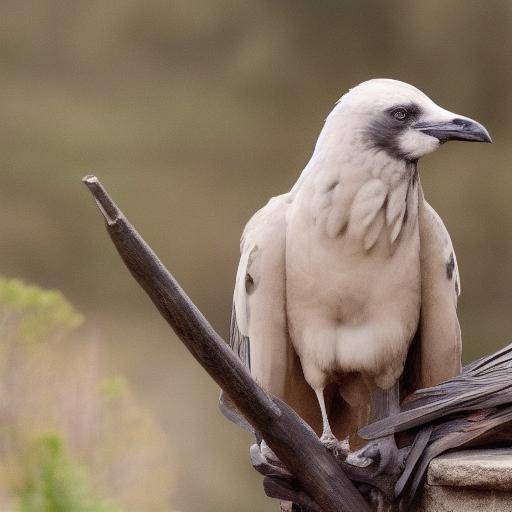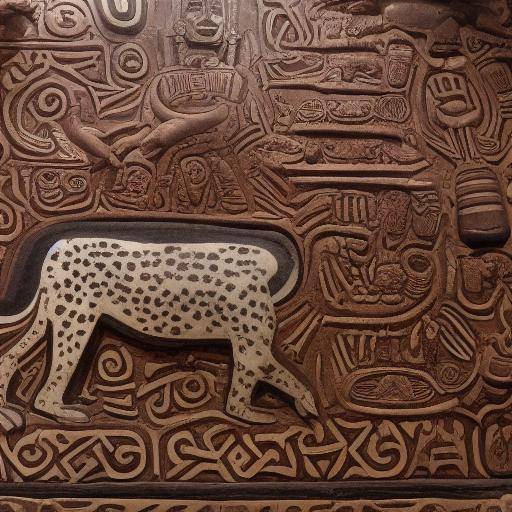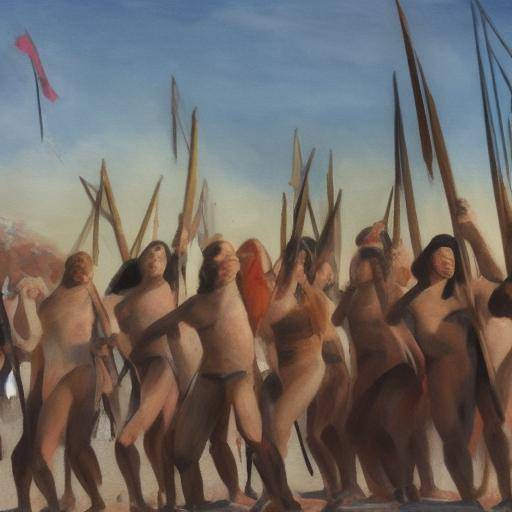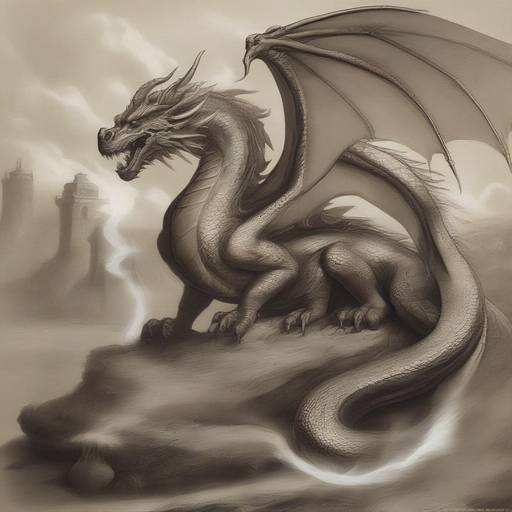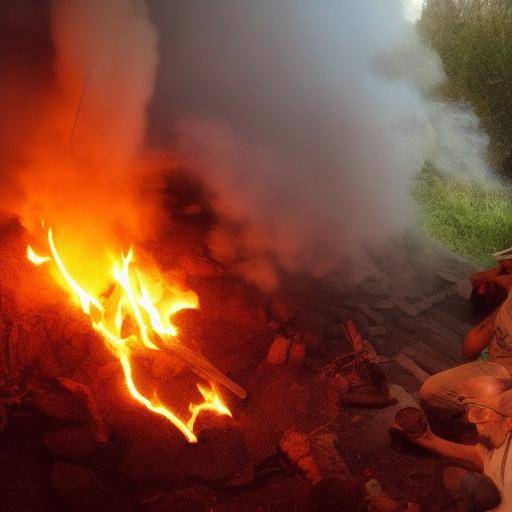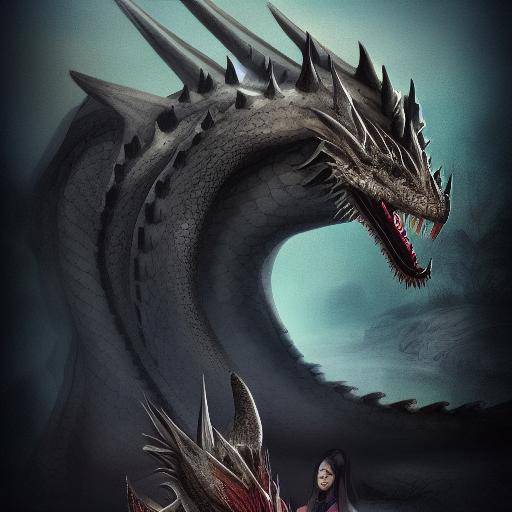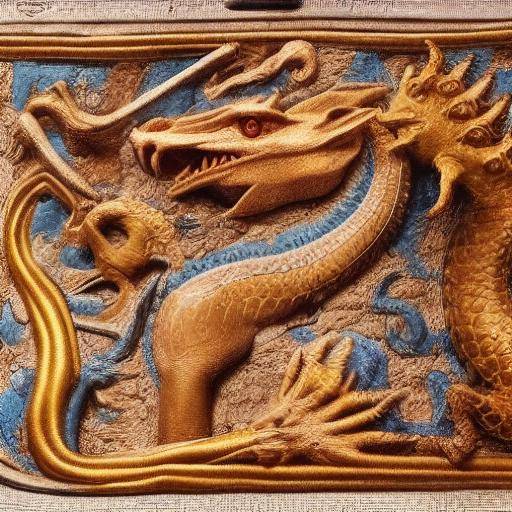
Introduction
The presence of dragons in medieval mythology has captured the imagination of people of all ages over the centuries. These mythical creatures have played a significant role in the legends and stories of the time, offering deep symbolisms that have endured in time. In this article, we will explore the fascinating world of dragons in medieval mythology, unraveling their symbolism and their influence on the culture and art of the time. From its mysterious origin to its representation in literature and art, we will discover the magnitude of its impact on medieval society and how its meanings still last today.
History and Background
Dragons have been an omnipresent presence in the legends and myths of diverse cultures around the world, and medieval mythology was no exception. His symbolism varied according to the region, but his essence as powerful magical beings and fearsome beasts always prevailed.
Origins of dragons
The origins of dragons in medieval mythology date back to old beliefs and stories. In many cultures, dragons were conceived as evil beings representing chaos and danger. On the other hand, in some traditions, such as Chinese, dragons were symbols of strength, wisdom and good fortune.
In the Nordic mythology, dragons were guardians of precious treasures, which associated them with greed and material desire. These varied interpretations contributed depth and wealth to the symbolism of dragons, allowing them to be complex entities that transcended the simple representation of evil.
Representation in medieval literature and art
The presence of dragons in medieval literature and art is evidence of their cultural impact at that time. The stories of knights and princesses facing dragons to rescue kingdoms and demonstrate courage have become an integral part of the medieval narrative. These visual and narrative representations not only entertained, but also offered deep symbolic messages about the confrontation with evil and the conquest of internal fears.
Analysis in Deep
Symbolism of dragons
The symbolism of dragons in medieval mythology is rich and complex. They were often attributed to the representation of evil, cunning and destruction. However, in many sagas and epopeyas, dragons also symbolized the struggle between good and evil, overcoming challenges and affirming heroism. Their power and ferocity made them powerful metaphors for the obstacles humanity faces throughout their journeys.
Dragons were also associated with transformation and rebirth issues. In some cultures, the dragon figure was seen as a symbol of change and the ability to overcome adversities to emerge renewed and strengthened.
Comprehensive review
Impact on contemporary culture
Although medieval mythology no longer has the same relevance as in its time, its influence persists in contemporary culture. Dragons remain popular figures in movies, books and games, and their symbolism still resonates with audiences from around the world. This lasting fascination with dragons is a test of the perdurability of mythical symbols and their ability to connect with the human essence.
Comparative analysis
Comparing dragons, medieval legends and symbolism
The relationship between dragons, medieval legends and symbolism is intrinsic. Medieval legends thoroughly explored the symbolism of dragons, using these mythical creatures as vehicles to convey moral and philosophical teachings. Symbolism associated with dragons in medieval mythology has transcended generations, leaving a profound impression on popular culture to this day.
Practical Tips and Accessible Recommendations
For those who wish to explore further the symbolism of dragons in medieval mythology, there are several actions that can be undertaken:
- Read medieval literary works that present dragons as central characters, such as Beowulf or The Legend of Saint George.
- Explore the symbolisms associated with dragons in different cultures throughout history.
- Visit museums or art galleries that shelter representations of dragons in medieval art.
Perceptions of Industry and Expert Reviews
Dr. Carmen Sánchez, expert in medieval mythology, says: "The presence of dragons in medieval legends is a reflection of the deep fears and longings of the society of that time. These mythical creatures represent both the challenge and the promise of the conquest of the unknown."
Case Studies and Real Life Applications
An example of the survival of the symbolism of dragons in modern culture is the popular series of novels and television "Game of Thrones". The dragons in this work represent power, freedom and sometimes danger in a narrative that intertwines the symbolism of dragons with complex political intrigues and moral conflicts.
Future Trends and Predictions
As society continues to evolve, the symbolism of dragons is likely to continue to adapt to contemporary concerns and aspirations. This timeless symbolism will probably continue to inspire new generations of creators and audiences, transcending eras and cultural borders.
Conclusion
In short, the symbolism of dragons in medieval mythology is an inexhaustible source of meaning and fascination. These mythical creatures have deeply influenced human culture and imagination over the centuries, persisting as powerful and timeless symbols. Through their presence in legends, art and literature, dragons have left an indelible mark on collective consciousness, reminding us of the eternal struggle between light and darkness, good and evil, fear and courage.
Frequently asked questions
**1. What is the origin of dragon symbolism in medieval mythology?**The symbolism of dragons in medieval mythology has its roots in ancient beliefs and myths of diverse cultures, which were then intertwined with medieval narratives to acquire new meanings.
**2. How is the symbolism of dragons represented in medieval art?**In medieval art, dragons were portrayed as majestic and fearsome creatures, often linked to heroes or heroines who challenged them, symbolizing the struggle between good and evil.
**3. What is the legacy of dragon symbolism in contemporary culture?**The symbolism of dragons remains a source of inspiration in contemporary culture, has been integrated into books, movies, games and other artistic expressions, maintaining its powerful emotional impact.
**4. How can those interested in medieval mythology deepen the symbolism of dragons?**It is recommended to read classic texts, explore artistic representations of the time and study the different cultural interpretations of dragons in medieval mythology.
**5. To what extent is the symbolism of dragons still relevant today?**Dragon symbolism remains very relevant, demonstrating its ability to adapt and resonate with contemporary concerns and aspirations.
**6. How did medieval legends influence the representation of dragons in modern culture?**Medieval legends contributed significantly to the consolidation of symbolisms associated with dragons in modern culture, moulding their representation as powerful and lasting archetypes.
With this, we end our exploration of the symbolism of dragons in medieval mythology, a theme that continues to fascinate people of all ages and remains relevant in the current world, demonstrating the perdurability and wealth of mythological symbols over time.


